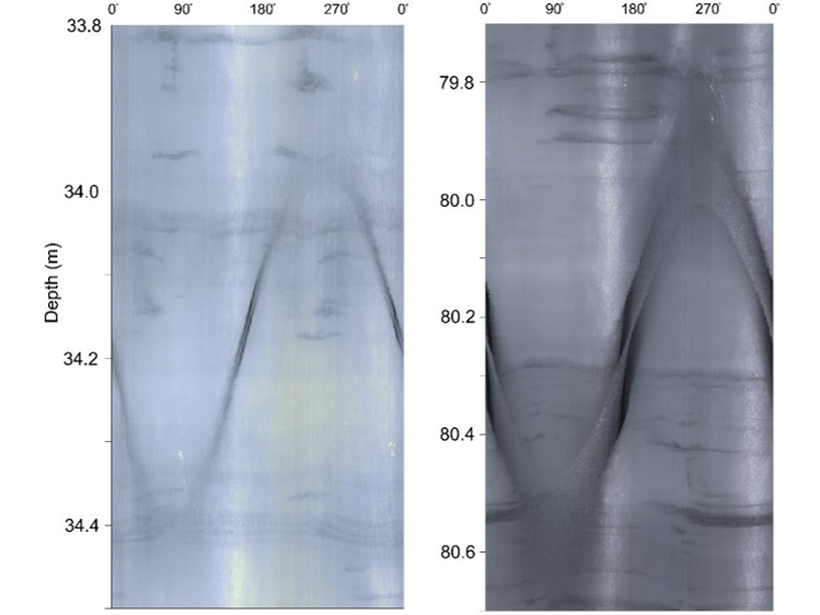Source: AGU Advances
Newly available optical technology has provided the first direct observations of crevasse traces in a borehole drilled in the Store Glacier, a fast-moving outlet glacier of the Greenland Ice Sheet. Hubbard et al. [2021] have recognized these traces as distinctive zones of steeply inclined layers with bubble-rich and bubble-free ice zones. These features are explained as crevasses that opened, filled with water, then refroze, sometimes occurring repeatedly in the same place. What is surprising is that these crevasse traces are observed up to 265 meters deep in the borehole, while increased ice temperatures suggest that water and the heat it carries are penetrating up to 400 meters, deeper than previously assumed. An implication of this discovery is that such deep crevasse traces can survive advection to the ice front and be an important determiner of patterns of ice calving and rifting.
Citation: Hubbard, B., Christoffersen, P., Doyle, S. H., Chudley, T. R., Schoonman, C. M., Law, R., & Bougamont, M. [2021]. Borehole-based characterization of deep mixed-mode crevasses at a Greenlandic outlet glacier. AGU Advances, 2, e2020AV000291. https://doi.org/10.1029/2020AV000291
—Susan Trumbore, Editor-in-Chief, AGU Advances
Text © 2021. The authors. CC BY-NC-ND 3.0
Except where otherwise noted, images are subject to copyright. Any reuse without express permission from the copyright owner is prohibited.

